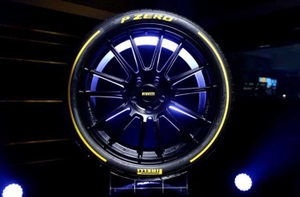Pirelli is preparing to release three new items
Oct 18, 2020
Pirelli explained how the company's research center works in a pandemic.
In March of this year, Italian Pirelli, like other tire manufacturers, had to close their factories due to the coronavirus pandemic, as a result of which the company's scientific department and its head Pierangelo Mizani had to quickly adapt to the new conditions. Since several new products are due to be presented no later than the beginning of next year, some of the work has been moved online so that quarantined engineers can test new materials and tires in virtual mode.
“There are crisis moments when you need to rebuild and improve your efficiency, and this is what we are doing now,” Mizani told Reuters.
Like other companies in the automotive sector, Pirelli has long been expanding the use of digital technology, which now enables virtual engineering, reducing the costs of the research department. At the same time, Pirelli continues to test in real-world conditions, because for a number of factors they are still preferable to virtual tests. Pirelli has hired young IT professionals with a variety of skill sets, Mizani said, and they are gradually moving away from costly proving ground tests to virtual ones.
Some tests, such as noise level and aquaplaning resistance, can be carried out with acceptable accuracy using computer simulations, but long-term road tests are still necessary to assess, for example, tire durability, handling, etc. At the same time, since the lockdown made it impossible to carry out tests, driving thousands of kilometers in cars, Pirelli engineers needed new solutions, one of which was a simulator similar to those that have been used in Formula 1 for many years.
The simulator, acquired by Pirelli, has a panoramic 210-degree screen and can be used to reduce tire development time by 30% by eliminating the need for physical prototypes. During the lockdown, the engineers worked remotely, connected to the Pirelli server, and Mizani says the role of simulation in the development process is becoming more significant and happening at a very fast pace.
According to him, modeling works best when accelerating the development of new tires for the aftermarket, for which Pirelli has prepared three new products - in early 2021, new summer UHP tires will be presented, as well as new all-season and winter models.
“The epidemic has pushed us to expand the use of computer modeling, so we will be fully prepared long before the new products are released to the market,” says Mizani.
In the OE segment, work is a little slower because the timing here depends on how the vehicle is being developed for which the tires are intended. “There were some delays in this segment, but things were not as bad as we expected, as automakers also worked on modernizing their IT platforms during this period,” Mizani said.
Pirelli's development centers are located around the world, including in Germany, South America, the United States and China, and the company also has its own testing facilities. Since now part of the work is carried out in virtual mode, the savings are directed, among other things, to the purchase of new tools and software and the improvement of the IT infrastructure. Not only does new technology lower costs, Mizani said, but more importantly, it reduces the time it takes to create new products and bring them to market. “This is not an optimization, but a complete restructuring of the scientific department,” he says.
